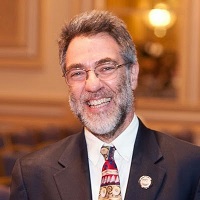 Comments and Suggestions to Advance and Strengthen Racial Equity, Diversity, and Inclusion in the Biomedical Research Workforce and Advance Health Disparities and Health Equity Research
Comments and Suggestions to Advance and Strengthen Racial Equity, Diversity, and Inclusion in the Biomedical Research Workforce and Advance Health Disparities and Health Equity Research
William Hersh, MD, Professor and Chair, OHSU
Blog: Informatics Professor
Twitter: @williamhersh
In addition to its public health problems, the COVID-19 pandemic has exposed other fault lines in society, not the least of which is systematic racism that still pervades American society. A more equitable society would ensure diversity and inclusion in all aspects of life, including in healthcare and in biomedical research. The National Institutes of Health (NIH), the premier US federal agency that funds biomedical research, has recognized the need for its activities to be more inclusive of all Americans from every background. Not only must biomedical research reflect the health issues for the entire US population, its workforce should ideally reflect the ethnic and racial makeup of our larger society. The NIH recently issued a request for information (RFI), asking for Comments and Suggestions to Advance and Strengthen Racial Equity, Diversity, and Inclusion in the Biomedical Research Workforce and Advance Health Disparities and Health Equity Research. This posting contains the comments I submitted in response to this RFI.
While others will likely comment on the need for biomedical research itself to address health disparities and move toward health equity, it is equally important to address the needs of the biomedical research workforce that will contribute solutions to these problems. The NIH has already made a tremendous commitment to diversity and inclusion, including in building career pathways the biomedical research workforce, but additional efforts must be made to facilitate access to these programs by extramural researchers and leaders.
One example is the Building Infrastructure Leading to Diversity (BUILD) Initiative, which has a prominent program in our region.
Nonetheless, there are still challenges for engaging the potential future biomedical research workforce. My particular concern is how to increase diversity and inclusion among faculty of academic health science centers.
One of the challenges is explaining to young minds the opportunity and the work of biomedical research. While most young people are familiar with healthcare professionals – i.e., physicians, nurses, and pharmacists – fewer are familiar with the work and importance of researchers. Schools and communities themselves may not be aware of career opportunities. There should be resources committed, and easy-to-use tools made available, so that academic health science centers and others can disseminate information about careers and the rewarding work of biomedical research.
A second challenge is for researchers themselves to have the time to engage in such mentoring and teaching. As demands for productivity by biomedical research faculty in academic health science centers increase – i.e., keep grants funded and students taught – there is less time in their busy schedules for this critical activity. Such activity is also unlikely to “count” toward promotion or lead to that next grant. There should be standards for promotion committees in academic health science centers to require diversity and inclusion outreach. Of course, this must not be an “unfunded mandate,” and instead be an activity that has committed time from institutions.
A third challenge is that success in biomedical research typically requires a graduate degree. As such, the road to college and then graduate or professional school is long and can be expensive. There must be pathways for students, especially for those of limited resources with few parental or other role models, to be helped through that long path. There should be opportunities provided, along with appropriate mentoring, for students to enable them to stay engaged during the long journey. Students should not only be given sustained exposure, but also be taught knowledge and skills along the way.
My own work is as an academic faculty in biomedical and health informatics, where I daily experience the satisfaction of research and teaching. While my field has made some strides in diversity and inclusion, it still has a long way to go to reflect our the racial and ethnic distribution of our larger society. Many who want to spend time engaging with future diverse researchers and professionals in the field need help in overcoming the above barriers. This leads to questions that must be answered:
- How do we engage with schools, community organizations, and others to expose high school and perhaps even younger students to biomedical research?
- How do we provide academic faculty with the protected time and academic credit for this work of critical importance?
- How do we develop pathways to sustain the interest and achievement for students, especially those from backgrounds that include little exposure to higher education?
We can and should require our academic health science centers and their faculty and others to engage with historically underrepresented groups in biomedical research, but make sure that they have the time and the tools, with milestones and outcomes measured, to achieve these goals. This should consist of:
- The availability of resources and tools to engage young minds in the possibilities for careers in biomedical research
- Expectations and protected time for existing faculty to devote effort to engaging with young students, including requirements to achieve promotion
- Developing pathways to sustain interest and achievement toward careers in biomedical research
By making diversity and inclusion efforts an expected activity of all biomedical research faculty and providing such faculty the resources and opportunities, we can achieve the shared aim of the biomedical research workforce and its activities reflecting the larger population of our country.
This article post first appeared on The Informatics Professor. Dr. Hersh is a frequent contributing expert to HealthIT Answers.
